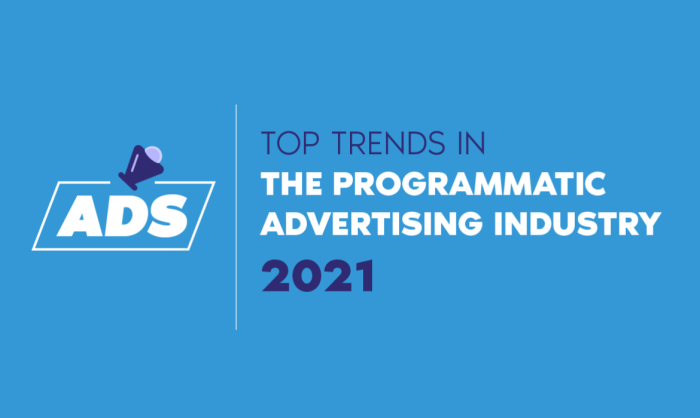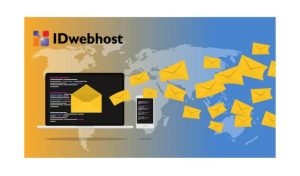
Get ready to dive into the dynamic world of programmatic advertising trends, where innovation meets strategy to shape the future of digital marketing. This captivating journey promises insights, trends, and surprises that will keep you hooked from start to finish.
As we explore the latest advancements and strategies in programmatic advertising, be prepared to witness the evolution of digital marketing in real-time.
Introduction to Programmatic Advertising Trends
Programmatic advertising refers to the automated buying and selling of online advertising space in real-time using data and algorithms. It allows advertisers to target specific audiences and optimize their campaigns for better performance.Staying updated with trends in programmatic advertising is crucial for marketers to remain competitive in the digital landscape. New technologies, consumer behaviors, and regulations constantly shape the industry, making it essential for advertisers to adapt and evolve their strategies accordingly.
The Revolution of Programmatic Advertising
Programmatic advertising has revolutionized the digital marketing landscape by offering precise targeting capabilities, real-time optimization, and automation of ad buying processes. This has led to increased efficiency, effectiveness, and ROI for advertisers, making it a preferred choice for reaching and engaging target audiences.
Emerging Technologies in Programmatic Advertising
Artificial Intelligence (AI) and machine learning are revolutionizing the landscape of programmatic advertising. These technologies play a crucial role in automating and optimizing ad buying processes, making campaigns more efficient and effective.
Role of AI and Machine Learning
AI and machine learning algorithms analyze vast amounts of data in real-time to make informed decisions about ad placements. These technologies help advertisers target the right audience with personalized ads, leading to higher engagement and conversions.
Impact of Automation on Programmatic Ad Buying
Automation in programmatic ad buying streamlines the process by removing manual tasks and optimizing bids in real-time. This results in improved ad performance, cost-efficiency, and better ROI for advertisers.
Use of Data Analytics in Optimizing Programmatic Ad Campaigns
Data analytics tools provide valuable insights into audience behavior, preferences, and trends, enabling advertisers to tailor their ad campaigns for maximum impact. By leveraging data analytics, advertisers can optimize targeting, messaging, and creatives to drive better results.
Personalization and Targeting in Programmatic Advertising
Personalization and targeting are crucial aspects of programmatic advertising that enable brands to create more relevant and engaging ad experiences for their audiences. By leveraging data and technology, advertisers can deliver tailored messages to specific individuals based on their interests, behaviors, and demographics.
Significance of Personalized Ad Experiences
Personalized ad experiences are essential for capturing the attention of consumers in today’s crowded digital landscape. When ads are personalized, they resonate more with the target audience, leading to higher engagement rates and increased conversion rates. By showing consumers content that is relevant to their needs and preferences, brands can build stronger relationships with their customers and drive loyalty over time.
Precision Audience Targeting in Programmatic Advertising
Programmatic advertising allows advertisers to target their ads with precision, reaching the right audience at the right time with the right message. By using data to understand consumer behavior and preferences, advertisers can segment their audiences and deliver highly targeted ads that are more likely to convert. This level of targeting ensures that ad spend is used efficiently and effectively, maximizing ROI for brands.
Challenges and Opportunities of Hyper-Targeting
While hyper-targeting in programmatic advertising offers numerous benefits, it also presents challenges. One of the main challenges is ensuring that data privacy and compliance regulations are followed to protect consumer information. Additionally, hyper-targeting can lead to ad fatigue if consumers feel overwhelmed by the amount of personalized content they receive. However, when done correctly, hyper-targeting can provide brands with valuable insights into their audiences and help them deliver more relevant and impactful ad experiences.
Transparency and Brand Safety in Programmatic Advertising
Transparency and brand safety are crucial aspects of programmatic advertising that ensure trust and credibility in ad transactions. It is essential for advertisers to have visibility into where their ads are being placed and to ensure that their brand is not associated with harmful or inappropriate content.
Importance of Transparency in Programmatic Ad Transactions
Transparency in programmatic ad transactions allows advertisers to have full visibility into where their ads are being shown, the audiences they are reaching, and the performance of their campaigns. This helps in building trust between advertisers, publishers, and ad tech vendors, ultimately leading to more effective campaigns and better outcomes.
Strategies for Ensuring Brand Safety in Programmatic Advertising
- Utilize brand safety tools and technologies that help in monitoring and filtering out potentially harmful or inappropriate content.
- Implement strict guidelines and blacklists to prevent ads from appearing on websites or platforms that do not align with the brand’s values.
- Work closely with trusted publishers and partners to ensure brand-safe placements and environments for ads.
Impact of Ad Fraud on Programmatic Advertising Campaigns
Ad fraud poses a significant threat to programmatic advertising campaigns, leading to wasted ad spend, decreased ROI, and damage to brand reputation. Advertisers need to be vigilant and invest in fraud detection and prevention tools to combat fraudulent activities such as impression fraud, click fraud, and bot traffic.
Cross-Device and Cross-Channel Integration in Programmatic Advertising
In today’s digital landscape, consumers are constantly switching between devices and channels to access content and engage with brands. Cross-device and cross-channel integration in programmatic advertising have become essential for marketers to reach their target audiences effectively and maximize campaign performance.Cross-device targeting in programmatic advertising allows marketers to deliver a cohesive and personalized message to consumers across multiple devices such as smartphones, tablets, desktops, and connected TVs.
This approach enables brands to engage with users at different touchpoints throughout their customer journey, providing a seamless experience and increasing the chances of conversion.
Benefits of Cross-Device Targeting
- Improved reach and frequency: By targeting consumers on multiple devices, marketers can increase the reach of their campaigns and maintain frequency to reinforce brand messaging.
- Enhanced user experience: Cross-device targeting enables a consistent brand experience, providing users with relevant and personalized content regardless of the device they are using.
- Better attribution and measurement: Marketers can gain a holistic view of consumer behavior and track conversions more accurately by attributing actions to specific devices in the customer journey.
Challenges of Integrating Across Multiple Channels
- Data fragmentation: Managing data across different channels can be complex, leading to challenges in audience segmentation and targeting.
- Campaign consistency: Maintaining a consistent brand message and creative across multiple channels requires careful coordination and alignment of strategies.
- Ad fraud and viewability: Ensuring brand safety and ad viewability becomes more difficult when running campaigns across various channels with different standards and practices.
Best Practices for Cross-Channel Advertising Strategy
- Unified data management: Consolidate data from various channels to create a single customer view and optimize targeting and personalization.
- Integrated technology stack: Implement a unified marketing technology stack that allows seamless execution and measurement of campaigns across channels.
- Cross-channel optimization: Continuously analyze campaign performance across channels and optimize strategies based on real-time insights to maximize ROI.
Programmatic Advertising in the E-Commerce Industry
Programmatic advertising has revolutionized the way e-commerce businesses reach their target audience and drive online sales. By utilizing real-time bidding and automated ad buying, e-commerce companies can optimize their advertising strategies to maximize ROI and conversions.
Leveraging Programmatic Advertising in E-Commerce
- E-commerce businesses leverage programmatic advertising to target potential customers based on their browsing behavior, demographics, and interests.
- By using data-driven insights, e-commerce companies can create personalized ad campaigns that resonate with their target audience, leading to higher engagement and conversion rates.
- Programmatic advertising allows e-commerce businesses to reach consumers across multiple devices and channels, ensuring a seamless shopping experience.
Role of Programmatic Advertising in Driving Online Sales
- Programmatic advertising plays a crucial role in driving online sales by delivering targeted ads to the right audience at the right time, influencing purchase decisions.
- Through dynamic retargeting and personalized messaging, e-commerce businesses can re-engage potential customers and guide them through the sales funnel.
- Real-time optimization and performance tracking enable e-commerce companies to adjust their ad campaigns in real-time, maximizing ROI and driving conversions.
Successful Programmatic Advertising Campaigns in E-Commerce
- Case Study: XYZ E-Commerce saw a 30% increase in online sales by implementing a programmatic advertising campaign that targeted high-intent shoppers during peak shopping seasons.
- Case Study: ABC Fashion utilized programmatic advertising to showcase personalized product recommendations to past customers, resulting in a 25% boost in repeat purchases.
- Case Study: DEF Electronics optimized their programmatic ads for cross-device and cross-channel integration, leading to a 40% increase in conversions and a 20% decrease in cost per acquisition.
The Intersection of Affiliate Marketing and Programmatic Advertising

Affiliate marketing and programmatic advertising are two powerful digital marketing strategies that, when combined, can create a synergistic effect to drive better results for brands. By leveraging the strengths of both approaches, marketers can reach a wider audience, increase conversions, and optimize their advertising spend.
Integration of Affiliate Marketing into Programmatic Advertising Campaigns
Affiliate marketing strategies can be seamlessly integrated into programmatic advertising campaigns by leveraging affiliate networks and platforms. Marketers can work with affiliate partners to promote their products or services to a targeted audience, while using programmatic advertising to reach a larger pool of potential customers. This integration allows for a more holistic approach to digital marketing, combining the personalized touch of affiliate marketing with the scale and efficiency of programmatic advertising.
- Affiliate partners can help drive traffic to a brand’s website or app, complementing the reach of programmatic ads.
- Programmatic advertising can be used to retarget users who have interacted with affiliate links, increasing the chances of conversion.
- Affiliate data can be used to inform programmatic targeting strategies, ensuring that ads are shown to the right audience at the right time.
Benefits of Combining Affiliate Marketing with Programmatic Advertising
The combination of affiliate marketing and programmatic advertising offers several benefits for brands looking to maximize their digital marketing efforts.
- Increased reach and brand exposure by tapping into the affiliate partner’s audience and leveraging programmatic ad networks.
- Improved targeting and personalization by using affiliate data to inform programmatic ad campaigns.
- Cost-effective advertising strategies that focus on performance-based affiliate partnerships and efficient programmatic ad placements.
Examples of Successful Collaborations between Affiliates and Programmatic Advertisers
There have been numerous successful collaborations between affiliate marketers and programmatic advertisers, leading to significant results for brands.
- A fashion retailer partnering with fashion bloggers for affiliate marketing and using programmatic advertising to reach a wider audience interested in fashion and lifestyle products.
- An e-commerce brand working with niche affiliate websites to promote specific product categories and using programmatic retargeting to drive conversions among interested users.
- A travel company partnering with travel influencers for affiliate promotions and using programmatic ads to target users based on their travel preferences and behavior.
Branding Strategies in Programmatic Advertising

In the digital age, building brand awareness is crucial for businesses looking to stand out in a crowded marketplace. Programmatic advertising offers a unique opportunity to reach target audiences effectively and efficiently. Let’s explore how programmatic advertising can be leveraged to create impactful branding strategies.
Utilizing Data for Targeted Brand Awareness
- Programmatic advertising allows brands to leverage data insights to target specific audiences based on demographics, interests, and behaviors.
- By utilizing data-driven targeting, brands can ensure that their ads reach the right people at the right time, increasing the chances of building brand awareness.
- Targeted advertising through programmatic channels can help brands establish a strong presence in the digital landscape and differentiate themselves from competitors.
Maintaining Brand Consistency Across Channels
- One of the challenges in programmatic advertising is maintaining brand consistency across different channels and devices.
- Brands must ensure that their messaging, visuals, and tone remain consistent to reinforce brand identity and values.
- Utilizing dynamic creative optimization tools can help brands tailor their ads to specific audiences while maintaining brand consistency.
The Power of Storytelling in Brand Building
- Storytelling plays a crucial role in brand building through programmatic advertising, as it helps create emotional connections with consumers.
- By crafting compelling narratives in ad campaigns, brands can engage audiences on a deeper level and leave a lasting impression.
- Programmatic advertising offers the flexibility to deliver personalized storytelling experiences to different audience segments, enhancing brand recall and loyalty.
Direct Marketing Tactics in Programmatic Advertising
Programmatic advertising can be a powerful tool for direct response marketing, allowing advertisers to reach their target audience with precision and efficiency. By leveraging data and automation, marketers can deliver personalized messages to consumers based on their behavior, interests, and demographics.
Advantages of leveraging programmatic advertising for direct marketing campaigns
- Targeted Reach: Programmatic advertising enables advertisers to target specific audiences based on a variety of factors, ensuring that their message reaches the right people at the right time.
- Real-Time Optimization: With programmatic advertising, marketers can continuously monitor and adjust their campaigns in real-time, optimizing performance and maximizing ROI.
- Cost-Effective: Programmatic advertising allows for precise targeting, which can lead to higher conversion rates and lower acquisition costs compared to traditional advertising methods.
- Measurable Results: Marketers can track the performance of their direct marketing campaigns in real-time, allowing them to make data-driven decisions and improve campaign effectiveness.
Case studies of successful direct marketing initiatives using programmatic advertising
One notable case study is that of a fashion retailer who used programmatic advertising to target consumers who had previously visited their website but did not make a purchase. By delivering personalized ads featuring products they had viewed, the retailer was able to increase conversions and drive sales.
Another example is a travel company that used programmatic advertising to target consumers based on their browsing behavior and travel preferences. By delivering relevant ads to the right audience at the right time, the company saw a significant increase in bookings and revenue.
Leveraging Internet Marketing Channels in Programmatic Advertising
In the realm of programmatic advertising, leveraging various internet marketing channels can significantly impact the success of campaigns. By integrating channels like , social media, and content marketing, advertisers can reach their target audience more effectively and drive better results.
Integration
- plays a crucial role in programmatic advertising by ensuring that ads are displayed to the right audience at the right time. By optimizing s and content, advertisers can improve their ad visibility and drive more traffic to their sites.
- Integrating strategies into programmatic campaigns can help improve ad relevance and ultimately increase click-through rates and conversions.
Social Media Engagement
- Social media platforms offer a wealth of targeting options that can be leveraged in programmatic advertising. By utilizing social media data to target specific demographics, advertisers can reach their ideal audience with precision.
- Engaging with users on social media through interactive content and personalized messaging can enhance the effectiveness of programmatic ads and drive higher engagement rates.
Content Marketing Strategy
- Content marketing plays a crucial role in programmatic advertising by providing valuable and relevant information to users. By creating compelling content that resonates with the target audience, advertisers can attract and retain customers more effectively.
- Integrating content marketing into programmatic campaigns can help build brand credibility and trust, leading to higher conversions and brand loyalty.
Utilizing Mailing Lists for Programmatic Advertising Campaigns
When it comes to programmatic advertising campaigns, incorporating mailing lists can be a powerful strategy for reaching a targeted audience effectively. By leveraging email lists, marketers can personalize their ads, increase engagement, and drive conversions. Let’s explore how mailing lists can be integrated into programmatic advertising and the benefits they offer.
Benefits of Using Email Lists for Programmatic Ad Personalization
- Enhanced Personalization: Mailing lists provide valuable data on subscriber preferences, behaviors, and interests, allowing for highly targeted and personalized ad campaigns.
- Increased Engagement: By delivering relevant content to recipients who have opted in to receive emails, marketers can boost engagement rates and build stronger relationships with their audience.
- Improved Conversion Rates: Targeting individuals who have already shown interest in a brand or product through their email subscription can lead to higher conversion rates and ROI.
- Cost-Effective Advertising: Utilizing existing email lists eliminates the need for extensive audience research and can result in more cost-effective advertising campaigns.
Best Practices for Integrating Mailing Lists into Programmatic Advertising Campaigns
- Segment Your Email List: Divide your mailing list into specific segments based on demographics, behaviors, or purchase history to create tailored ad experiences for different groups.
- Use Dynamic Content: Incorporate dynamic content in your ads that can change based on the recipient’s preferences or interactions with previous emails to increase relevance.
- Optimize for Mobile: Ensure that your programmatic ads are mobile-responsive as a significant portion of email opens now occur on mobile devices.
- Monitor Performance: Track the performance of your programmatic ad campaigns using email list data to refine targeting, messaging, and overall strategy for better results.
Closing Notes
In a nutshell, programmatic advertising trends offer a roadmap to success in the ever-evolving digital landscape. Stay ahead of the curve, embrace innovation, and watch your marketing strategies soar to new heights.
FAQ Compilation
How is programmatic advertising different from traditional advertising?
Programmatic advertising leverages data and technology to automate ad buying in real-time, reaching specific audiences more effectively than traditional methods.
What role does AI play in programmatic advertising?
AI enhances targeting capabilities, optimizes ad placements, and improves overall campaign performance by analyzing vast amounts of data efficiently.
Why is brand safety crucial in programmatic advertising?
Ensuring brand safety protects companies from associating with harmful content or fraudulent activities, maintaining their reputation and credibility.





